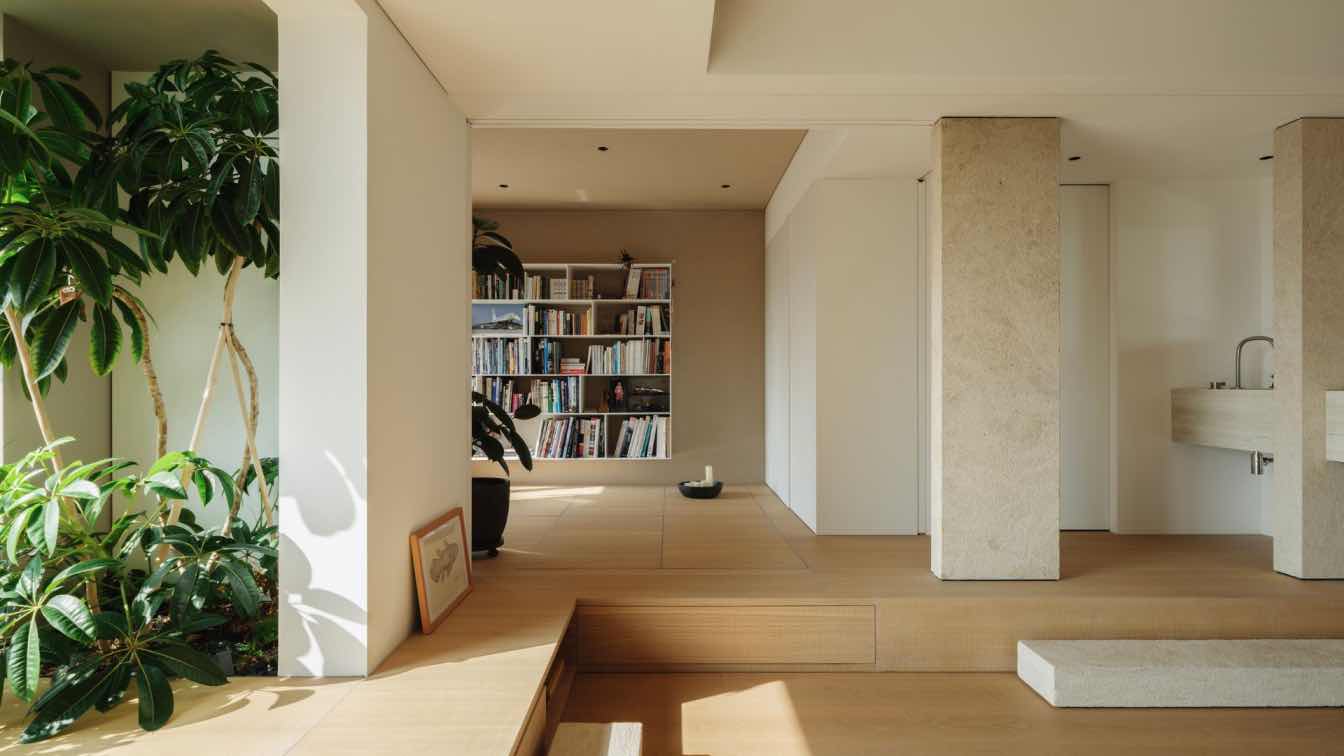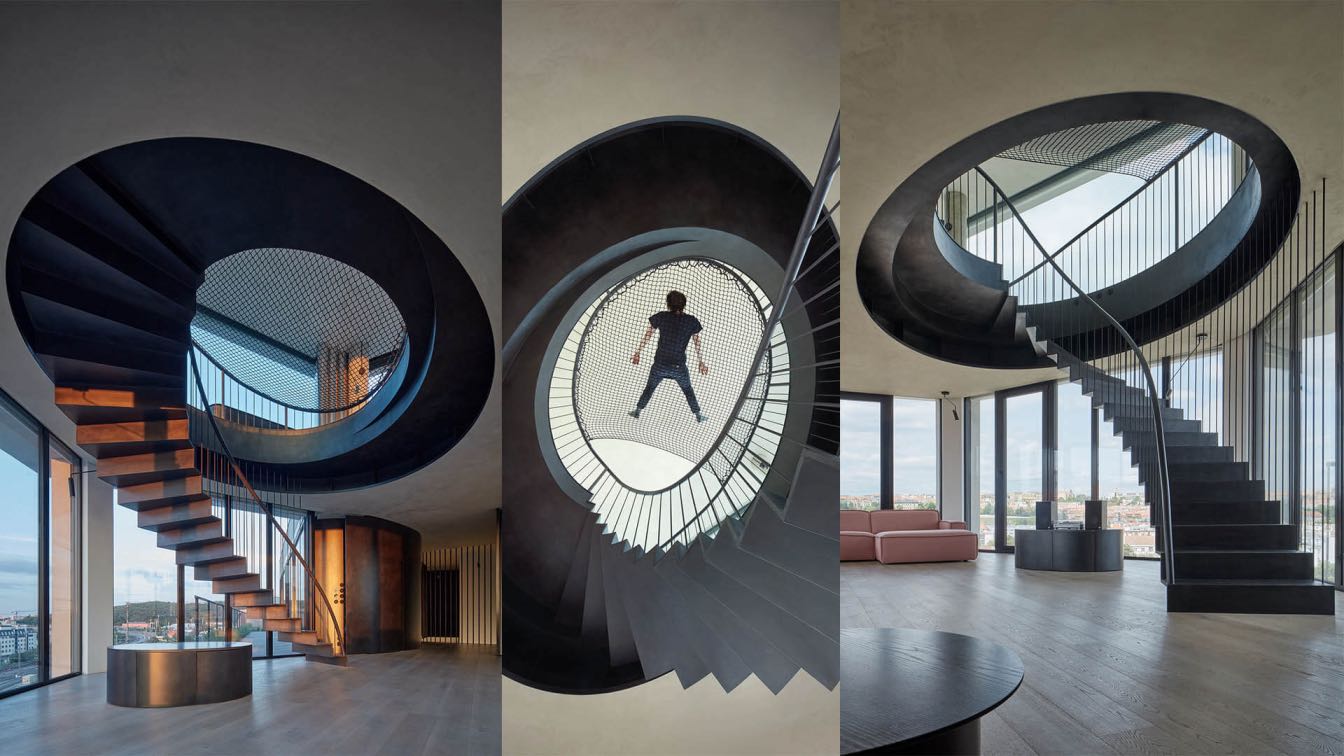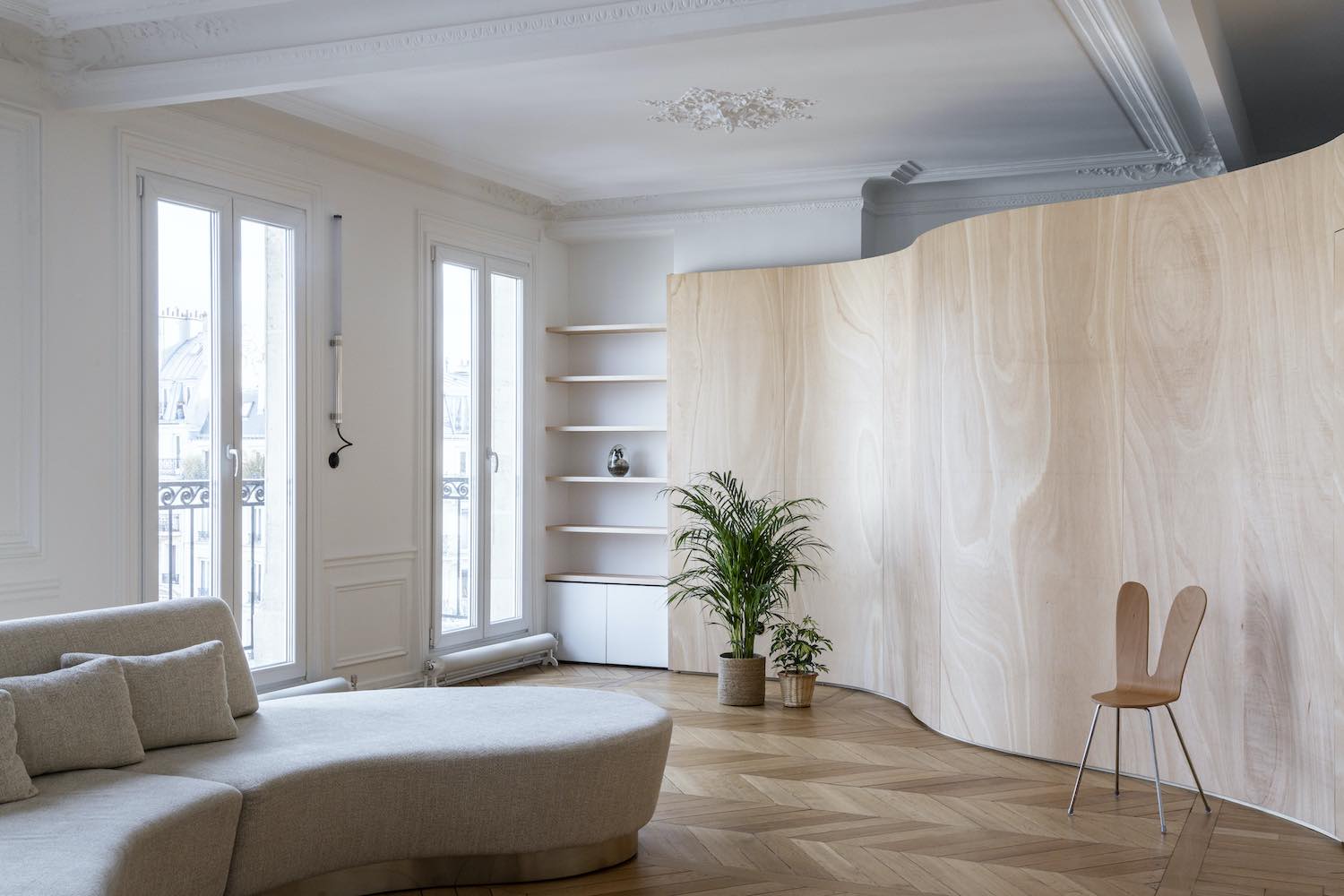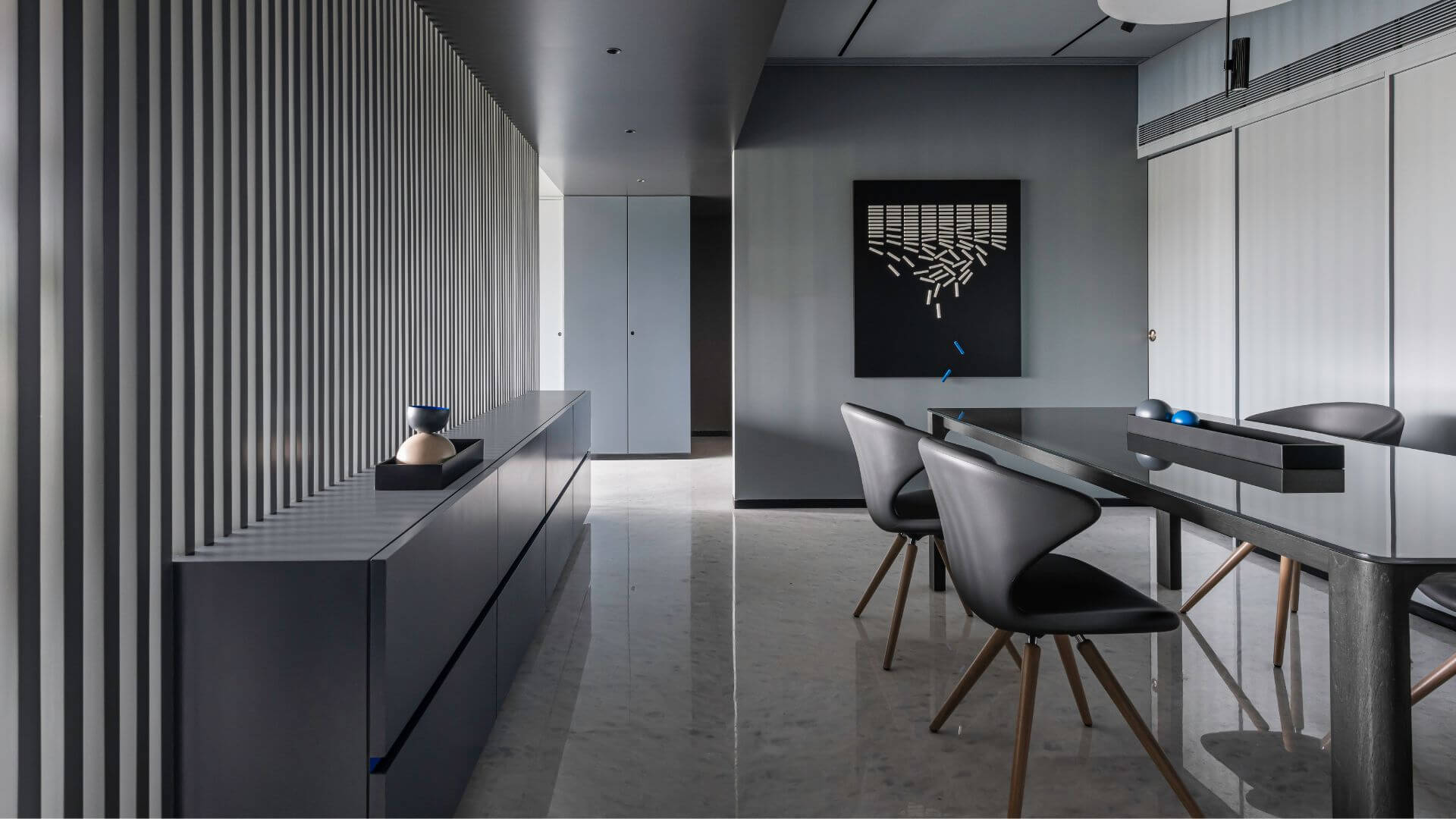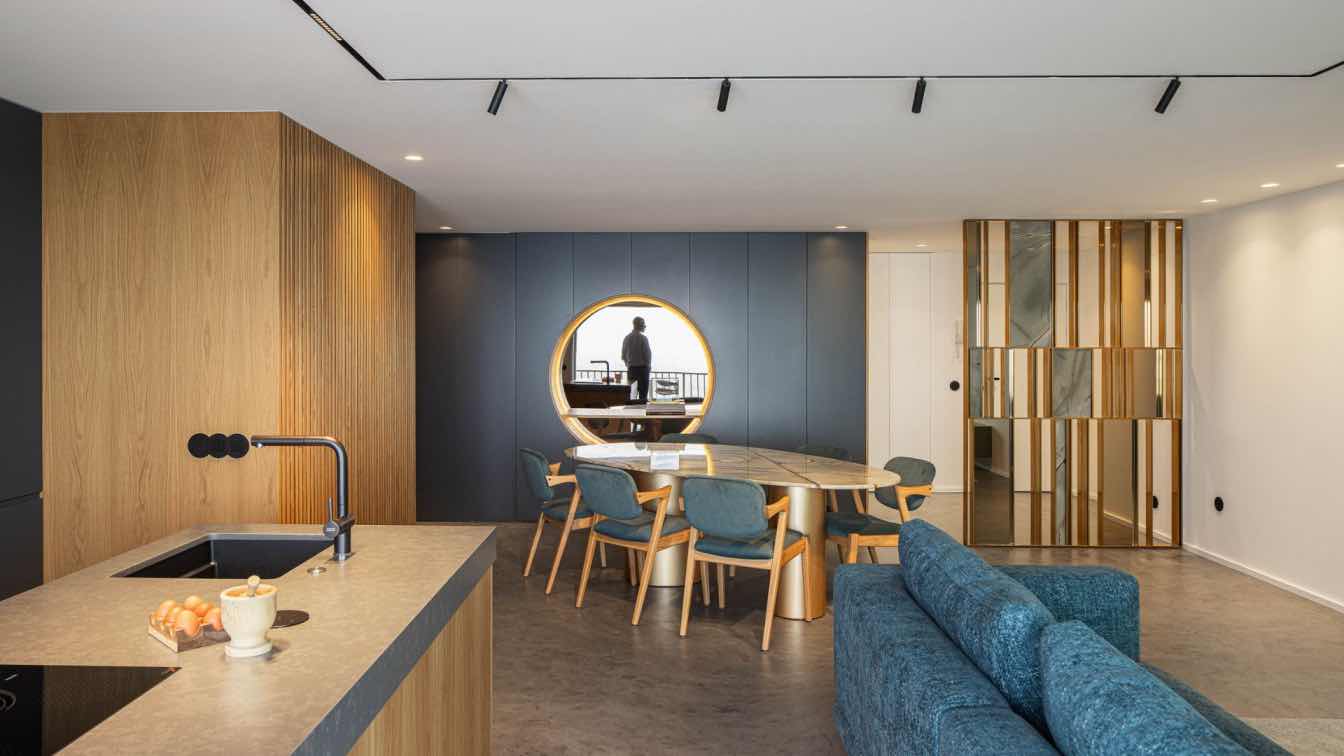Background
This is the home KINJO designed for game concept designer HJL—a high-rise residence overlooks a garden suspended above the highway. "In the confined space of the city—where urban life and nature merge, creating more room through a three-dimensional transformation," the project embodies a concept that is both magical and grounded in reality.
Using painting as his primary medium, HJL’s explores a wide range of interest—from games and models to natural history, weaponry, aerospace, and architecture. These diverse pursuits offer a multifaceted lens through which his creative identity emerges, forming a continuous inner world that remains open to interpretation and rich with imaginative possibility.
Design Concept
The design concept is rooted in the ideal fusion of nature and urban space. The topography—with its shifting elevations—is one of HJL’s favorite urban experiences: “You can’t take it all in at once, but there are surprises around every corner.” To him, the city is a constant puzzle, always holding one more unknown piece waiting to be discovered.
The original layout follows a conventional four-room configuration with a balanced but rigid arrangement. Though each space is systematically organized, the overall effect feels constrained and confined. As a solitary living space, it lacks the relational scale and spatial imagination needed to reflect the rhythms of everyday life. To address this, KINJO began by exploring the interaction between environment and space, reinterpreting the façade relationships within the framework of the original four-room layout. This approach generates dynamic divisions and connections through varying heights and extensions, shaping an organic flow of sightlines and spatial sequences. The design investigates the evolution of interior relationships—unified yet diverse, open yet contained—reimagining a natural sense of scale that urban spaces have gradually lost.

Inwards Path
The entrance, defined by a sunken platform, acts as a transitional “courtyard” leading into the interior. Half-height cabinets paired with horizontal windows frame views and guide movement along a gently curved path. A slender faucet hangs delicately, establishing a tranquil entry ritual. Hanging items, removing shoes, washing hands—this quiet progression from outside to inside, and from complexity to simplicity, fosters a space for natural introspection.
By adjusting the layout and circulation, the previously enclosed kitchen has been opened up, expanding from an L-shape to a U-shape, creating a more spacious and fluid environment. The entrance and kitchen—two previously confined spaces—are seamlessly integrated through the use of wood, scale, and light, forming a soft, cohesive transition.
The cabinet volume defines the spatial experience of the doorway, with the floor guiding movement toward the double doors, enhancing the ritualistic act of entering the main space. Through a concise and restrained approach, the design evokes the scale of traditional residences. When the double doors are opened for daily use, they seamlessly retract, further enhancing the continuity of the space.
In "Garden of Eden"
Inspired by the ideal of the "garden," the living and multi-functional spaces, centered around the daily presence of books and plants, merge into a unified scene of "reading + relaxation." Their interconnected forms dissolve the traditional, living room-centric layout.
The elevated platform incorporates ample storage, creating a spacious L-shaped surface that encourages a relaxed daily routine of casual sitting and lounging. As a multifunctional element, it seamlessly transforms the previously distinct areas into a naturally flowing corridor.
Facing the core challenge of storage—managing the pressure of a large model collection—the space is reduced to its essential framework. Within the open layout, one section incorporates hidden storage that seamlessly integrates with the space's "topography," while the other, left in a more untamed state, is freed from precise control. As a collage, books, models, and plants come form a shared "settlement," weaving together a diverse "geographic" pixel. A complete everyday life unfolds—neither deliberately showcased nor needing embellishment.
Stone steps and plants are arranged in a staggered formation, creating a landscape that serves not only as part of the space's natural language but also as an integral part of daily life. The multi-functional room seamlessly integrates with the landscape, drawing inspiration from the form of outdoor terrain. The tatami wood veneer, with its saw-tooth pattern matching the living room floor, unites the space into an open, organic whole with a natural, textured feel. Walking barefoot, the different areas are naturally defined by the scale of personal activity—whether moving upward or downward.

Columned Space
Incorporating solid columns made of natural limestone, with textures shaped by deposition and weathering, weaves a tactile character into the space. At the same time, their sculptural form establishes a framework that imbues the space with openness, embodying a sense of “emptiness.”
An external stone slab washbasin, integrated into the open layout of stone columns and steps, expands the gray space, framing the landscape at the end of the corridor. The interplay of horizontal and vertical lines maintains a balanced and restrained order, while a vertical mirror deepens the visual space, adding layers of tranquility and dynamic stillness. The form and function of water reflect an Eastern natural spirit.
The multifunctional room is both open and independent. Two sliding doors meet at the columns, forming a fully enclosed, standalone space that can adapt to future needs. The sliding door system creates a continuous connection, organizing multi-layered spatial relationships. The space is viewed as a seamless whole, supporting a variety of activities, with areas for extension or concealment emerging through both separation and connection.
Daily “Gallery”
In the open-plan layout, the dining area is harmonized with the facade by a large white frame. Designed for practicality, a custom form allows for easy swapping of artworks, transforming the space into a daily realm of art and perception. Within this spatial domain, a sense of inward extension nurtures the sensory experience and leisurely flow of everyday life. The imagery and perception of the space cultivate an aesthetic spiritual realm.

Dwelling within Nature
Wood and white walls establish a pure, harmonious spatial tone. The light gray micro-cement facade, with its subtle tonal shifts between near and distant views, recedes from the overall space, becoming a soft, ethereal backdrop. Within the room, however, it envelops the space, creating a calm, secure atmosphere that fosters a sense of inward tranquility.
By adjusting the scale, the original hallway is integrated into the bedroom area, extending the transition from the dynamic zone to the quiet zone.
The boundary between the bedroom and living room is defined by a low platform and flexible sliding doors, inspired by the traditional indoor-outdoor relationship of the East. This approach eliminates enclosure, creating fluid spatial connections. The sunken space, combined with partially concealed greenery, blurs the lines between interior and exterior, fostering a tranquil atmosphere rooted in nature. With the opening and closing of the space, a sense of freedom is nurtured, linking the room to the “wild.”
The Space of Creation
The model room is centered around model making and display. Positioned at the opposite end of the bedroom, sliding doors allow for flexible separation and connection. From the bedroom, it presents an orderly arrangement of models. When the doors are closed, it isolates the impact of sanding and painting activities. KINJO also envisioned another scenario: waking up in the morning, opening the sliding doors, and discovering the model work completed the day before—a natural "surprise."
At the same time, the entry sink, integrated into the layout, serves as a functional extension of the model room, allowing for the nearby cleaning of model-making supplies. From the exterior, the models are concealed from view, preserving a clean, minimalist white form.
Both the drawing room and the model room maintain a fundamental white space. Pure geometric forms create a dynamic interplay of space through varying viewpoints, expanding organically while emphasizing a transparent visual dialogue that balances connection and detachment.
A long table made of natural materials creates a calm, spacious enclosure for daily work. Models and plants rest within the frame, growing in a staggered pattern and continually shaping the space. In this vibrant environment, one returns to a small, free, and quiet world.
Due to the building height and the space between them, the integration of the city and mountains is visible through the windows. Turning inward, the daily activities of painting, modeling, and plants create another “suspended” realm—vibrant and imaginative—coexisting with the self.
It is airy and free. Amid the density of the city, the extension and exploration of "landscape" unfold through scale, space, and imagination. Through non-fixed, undefined spaces, it evokes a daily connection to the physical environment, creating a quiet refuge hidden within the rhythm of the city. This space preserves a "here and now" state and an ideal lifestyle, nurturing self-growth while maintaining the purity and openness of a "utopia."
Here, it reflects both the vertical environment and a focus on the inner world—an organic relationship based on rational balance, creating connections that align with the essence of the space. In a realm that is neither mountain nor water, a flowing sense of nature emerges, responding to the present moment. The daily life of plants and the micro-world of fantasy grow organically, reshaping the imagination of space through nature’s core.


































